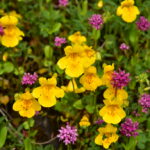Date of visit: September 4, 2011
Population: 9,477 (2010 Census)
“We are all wet and disagreeable” – William Clark’s Journal
Lewis & Clark arrived at the Pacific Ocean near present-day Astoria in December 1805, more than a year and a half after they left Illinois on the most epic road trip ever. They built a fort in which to spend the winter and they named it Fort Clatsop, after the Clatsop tribe that lived in the area. During the 106 days that the expedition spent in the area, it rained all but 12 of those days, which is unusually wet even by Pacific Northwest standards. They left in March and were probably glad to be hightailing it out of there.
The town of Astoria didn’t exist yet, of course, but a few years later in 1811 John Jacob Astor sent men from his Pacific Fur Company to build a fur trading post here. The fort passed into British hands in 1813 and then back into American hands in 1846. The first post office west of the Rockies was opened here in 1847, and by that time emigrants were arriving in the area after traveling halfway across the continent via the Oregon Trail. Today Astoria is a thriving tourist destination with a thriving art scene and when I visited in 2011 it was celebrating its bicentennial.

Josephson’s Smoked Fish, where I bought some excellent smoked salmon.

The beautiful Flavel House, built in 1886 and now a museum.

The Liberty Theatre was built in 1925.

A replica of the Customs House that was built in Astoria in 1852.

The Peacock, a decommissioned pilot boat now on display at the Columbia River Maritime Museum.

The Astoria-Megler Bridge stretches four miles across the Columbia River from Oregon to Washington. Before it opened in 1966 there was a ferry that traveled back and forth across the river.

Built in 1904 as Astoria’s City Hall, this is now the museum for the Clatsop County Historical Society.






